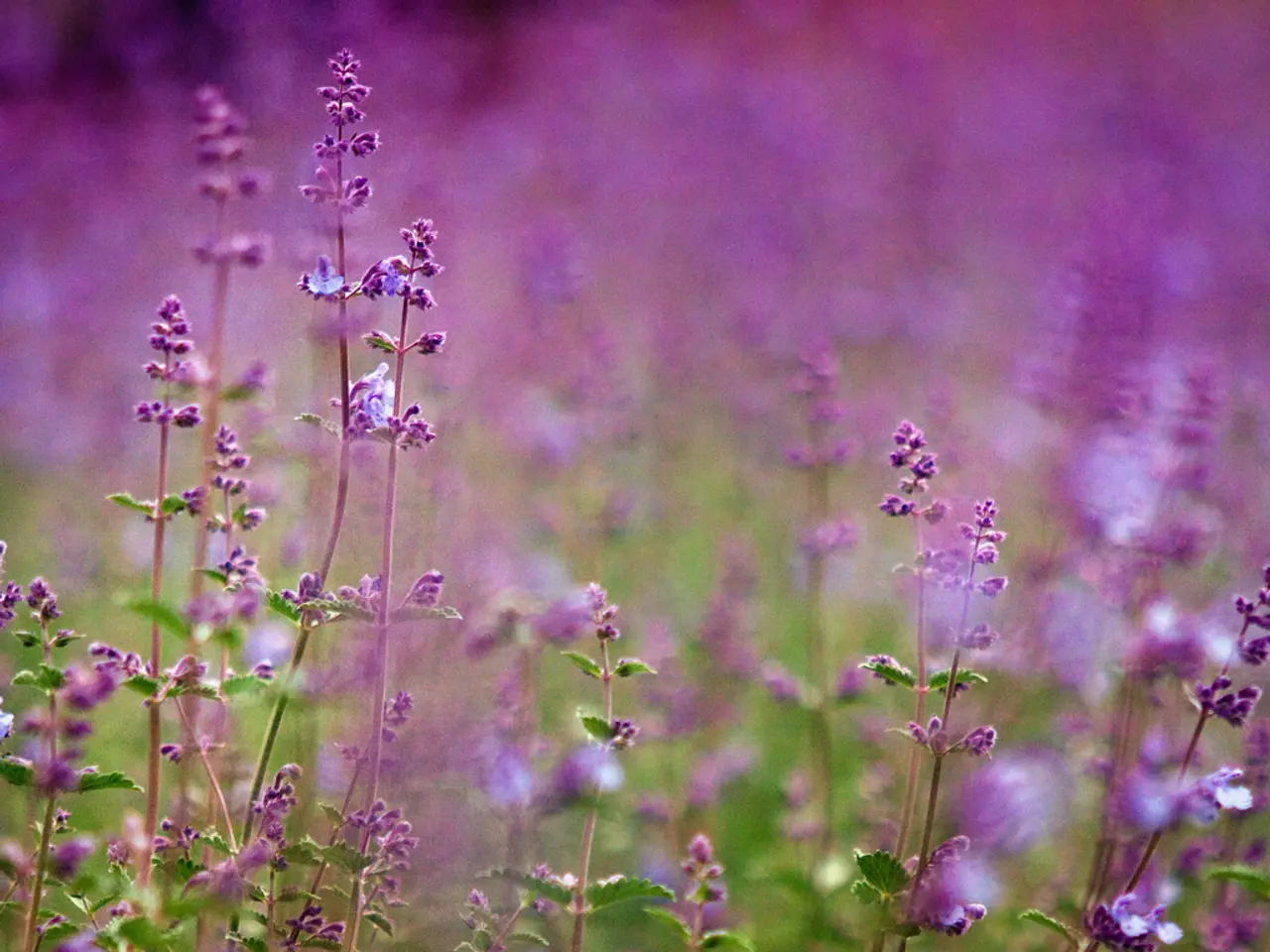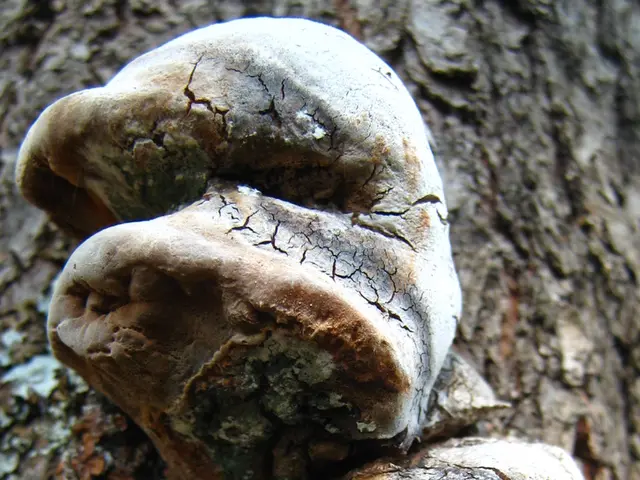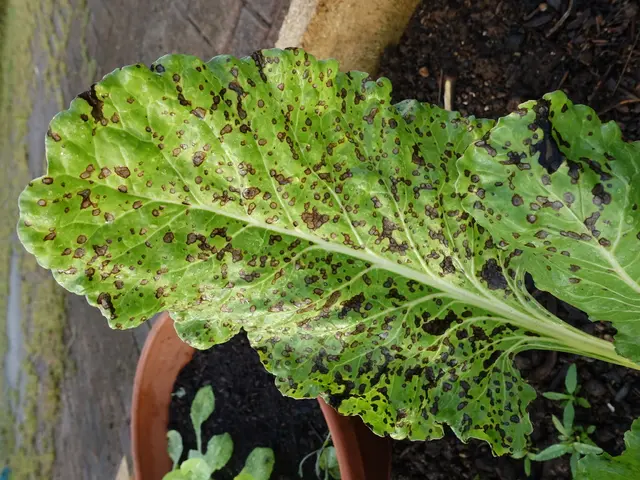Lavender Soil Needs: Crucial Information Revealed
Lavender, a beloved plant known for its fragrant flowers and soothing aroma, thrives best in specific soil conditions. To ensure a healthy and flourishing lavender garden, follow these guidelines for soil preparation.
Lavender prefers light, sandy, or loamy soils that are well-drained[1][2][5]. Heavy clay soils should be avoided or amended because poor drainage can lead to root rot. The ideal pH range for lavender is close to neutral to slightly alkaline, approximately 6.7 to 7.5[1][2][3][5].
To prepare the soil, adding 8-10 tons per hectare of well-rotted manure before planting improves soil organic content without overfertilizing[1]. For severe nutrient deficiencies, a balanced fertilizer like N-P-K 20-20-20 can be applied carefully at planting or shortly after, but excess nitrogen should be avoided because it promotes leafy growth at the expense of flowers[1][3].
In heavy soils, mixing sand or gravel helps increase drainage and reduce compaction and water retention[2][5]. Builder’s sand (not clay-sand mixes) is recommended if needed[2]. Soil pH can be corrected using lime or wood ash to reduce acidity if the soil is too acidic[3].
Lavender thrives in poor to moderately fertile, well-drained, sandy to loamy soils with neutral to slightly alkaline pH, supplemented moderately with organic matter to improve structure but avoiding rich, heavily fertilized soils[1][3][5].
When preparing a raised bed or container, work the sand into the top 6-8 inches of the soil for optimal drainage. Coarse sand is generally preferred for drainage applications when planting lavender. Mixing several inches of compost or organic matter in a raised bed can benefit young lavender plants[6].
To improve drainage, add builder's sand, perlite, or horticultural charcoal to the soil[7]. Using builder's sand can also enhance soil warmth, allowing for earlier planting and an extended growing season[7].
Lavender requires good air circulation, so plant it in an open, sunny position[8]. Planting lavender in a raised bed, along a wall, or near the top of a slope can improve drainage[9].
Test the soil's pH level before planting lavender to create the optimal growing environment[10]. Avoid using regular potting mix, as it can retain too much moisture[11]. Excess moisture can be harmful to lavender plants, and improving drainage can enhance their health and longevity[11].
By following these guidelines, you'll create the perfect soil conditions for growing lavender, ensuring good root health, optimal nutrient availability, and promoting abundant flowering in your lavender plants[1][2][3][5].
**Summary Table:**
| Factor | Ideal Condition | |-----------------|-------------------------------------| | Soil Type | Light, sandy or loamy, well-drained | | Soil pH | 6.7 to 7.5 (neutral to slightly alkaline) | | Soil Amendments | Well-rotted manure (8-10 tons/ha), balanced fertilizer if deficient, sand/gravel for drainage | | Avoid | Heavy clay, acidic soil (pH < 6.0), overfertilization with nitrogen |
References: [1] RHS - The Royal Horticultural Society. (2021). Growing Lavender. Retrieved from https://www.rhs.org.uk/plants/44168/Lavandula-angustifolia/Cultivation [2] HGTV. (2021). How to Grow Lavender: Tips and Tricks. Retrieved from https://www.hgtv.com/design/outdoors/gardens/how-to-grow-lavender-tips-and-tricks [3] Fine Gardening. (2021). Growing Lavender: Soil, Sun, and Water Requirements. Retrieved from https://www.finegardening.com/article/growing-lavender-soil-sun-and-water-requirements [4] University of California Agriculture and Natural Resources. (2021). Lavender. Retrieved from https://ucanr.edu/sites/Lavender/ [5] The Old Farmer's Almanac. (2021). How to Grow Lavender. Retrieved from https://www.almanac.com/plant/lavender [6] Gardening Know How. (2021). How to Plant Lavender in a Raised Bed. Retrieved from https://www.gardeningknowhow.com/ornamental/flowers/lavender/how-to-plant-lavender-in-a-raised-bed.htm [7] The Spruce. (2021). How to Plant Lavender in Containers. Retrieved from https://www.thespruce.com/how-to-plant-lavender-in-containers-3177944 [8] The English Cottage. (2021). How to Grow Lavender: 10 Tips for Success. Retrieved from https://www.theenglishcottage.com/growing-lavender-tips/ [9] The Old Farmer's Almanac. (2021). How to Grow Lavender. Retrieved from https://www.almanac.com/plant/lavender [10] Garden Myths. (2021). Soil pH and Lavender. Retrieved from https://www.gardenmyths.com/soil-ph-and-lavender/ [11] The Spruce. (2021). How to Plant Lavender in Containers. Retrieved from https://www.thespruce.com/how-to-plant-lavender-in-containers-3177944
To cultivate a thriving lavender garden at home, focus on home-and-garden projects, specifically gardening, with an emphasis on soil preparation. Strive for light, sandy or loamy soils that are well-drained, similar to the conditions preferred by lavender, which thrive in poor to moderately fertile, well-drained, sandy to loamy soils with neutral to slightly alkaline pH. Such soil conditions can be enhanced by adding well-rotted manure or designer mixtures featuring builder's sand, perlite, or horticultural charcoal to improve drainage, allowing for better root health and optimal nutrient availability in your lavender plants.








